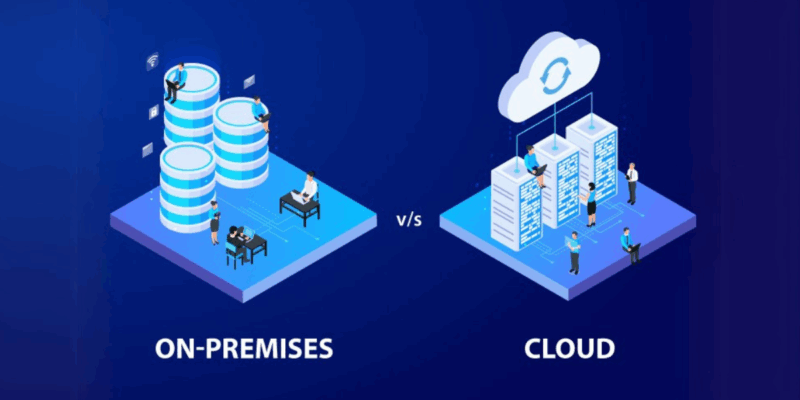Introduction to Treasury Management System
A treasury management system (TMS) is a solution for the control of financial processes. A TMS would support activities such as cash management, liquidity planning, bank reconciliation, payment processing and financial risk tracking. Treasury teams would use TMS for centralization of data, standardization of workflows and oversight of account balances and transactions.
A TMS would include modules for cash forecasting, payments, financial instruments, compliance reporting and bank communication. With a TMS, businesses maintain visibility across bank accounts, currencies, regions and counterparties. The system would provide structure for financial reporting, approval chains and audit controls.
What Is a Cloud-Based Treasury Management System?
A cloud-based treasury management solution will operate through remote hosting. A third-party provider will deliver the system through internet access and the system remains under the management of the vendor. Updates, maintenance and storage would occur within vendor-controlled infrastructure.
Cloud-based TMS platforms will support access from multiple locations. Teams would connect to the system through browsers or secure network portals. The vendor would supply infrastructure, software updates, backups and technical support. Clients would receive access through a subscription model. The system’s performance and availability would fall under the responsibility of the vendor.
What Is an On-Premises Treasury Management System?
An on-premises treasury management solution would operate through internal hosting. The company will manage infrastructure, servers, updates and system support. Installation would occur on local servers or data centres which is within the company control.
IT teams would manage system security, user access, data storage, backups and system maintenance. Updates would require internal scheduling, resource planning and manual deployment. The company would provide technical support, monitoring and issue resolution. Ownership of infrastructure and full control of system data will remain with the company.
Comparison: Cloud-Based vs On-Premises TMS
| Points to compare | Cloud-Based TMS | On-Premises TMS |
| 1. Infrastructure and Hosting | – Hosting by external vendor – Vendor-managed hardware and software – Vendor-controlled data centers | – Hosting by internal IT team – Company-managed servers and networks – Local or regional data centers under company control |
| 2. Access and Connectivity | – Access through internet connections – multi-location user access – No internal VPN or local setup required | – Access through internal network or VPN – Local installation for user access – Restricted access outside company network |
| 3. Implementation and Setup | – System provisioning by vendor – Minimal internal hardware setup – Standardized onboarding process | – Server configuration and network setup – Resource allocation for installation – Coordination between IT and treasury teams |
| 4. Maintenance and Updates | – Vendor-managed updates – Scheduled release cycles – Minimal internal involvement | – Manual patching and upgrade cycles – Coordination across departments – Internal resource dependency |
| 5. Cost Structure | – Subscription-based pricing model – Regular payment cycles (monthly or annual) – Vendor includes maintenance and support | – Capital expenditure for infrastructure – Ongoing maintenance costs – Internal IT resource usage |
| 6. Security and Data Control | – Security protocols managed by vendor – Compliance with third-party certifications – Shared responsibility for data privacy | – Full control of data security – Custom security protocols – Direct ownership of data and access logs |
| 7. Scalability and Flexibility | – Vendor-managed capacity – Dynamic resource allocation – Quick adjustment to business growth | – Fixed infrastructure – Manual upgrades for growth – Longer planning cycles for changes |
Which One Is Right for Your Business?
The decision to choose between cloud-based treasury management system and on-premises treasury management system would depend on multiple factors. Each model would offer specific benefits and challenges. Businesses will have to assess internal resources, IT capabilities, budget models, risk policies and operational goals.
Key Considerations:
1. Company Size and Structure
Large businesses with dedicated IT teams and internal data centres would often prefer on-premises models whereas medium-sized or regional businesses may benefit from cloud-based models with external support and reduced infrastructure.
2. IT Resources and Support
Organizations with strong IT departments would manage on-premises systems while businesses with limited IT staff would often rely on cloud-based systems with vendor-managed operations.
3. Data Control Requirements
Industries with strict regulatory requirements may favour on-premises systems for data control while organizations with less restrictive data policies may choose cloud-based models for ease of access and vendor compliance.
4. Budget Model Preferences
On-premises systems would involve capital expenditure and long-term planning whereas cloud-based systems would follow operational expenditure models with subscription costs. Businesses will choose models based on financial planning and budgeting structures.
5. Implementation Timeline
Cloud-based systems would offer faster deployment while on-premises systems require internal coordination, longer setup and infrastructure readiness. Businesses with urgent timelines may select cloud-based TMS.
6. Geographic Distribution
Global businesses with distributed teams may benefit from cloud-based systems while centralized organizations with local operations may prefer on-premises models with internal access control.
Conclusion
A treasury management solution would support financial operations across cash, payments and risk areas. The choice between cloud-based and on-premises models would depend on internal capabilities, cost structures and data management needs. Each model would deliver structure, access and control in different ways. Businesses would evaluate trade-offs to align system decisions with long-term financial and operational strategies.

